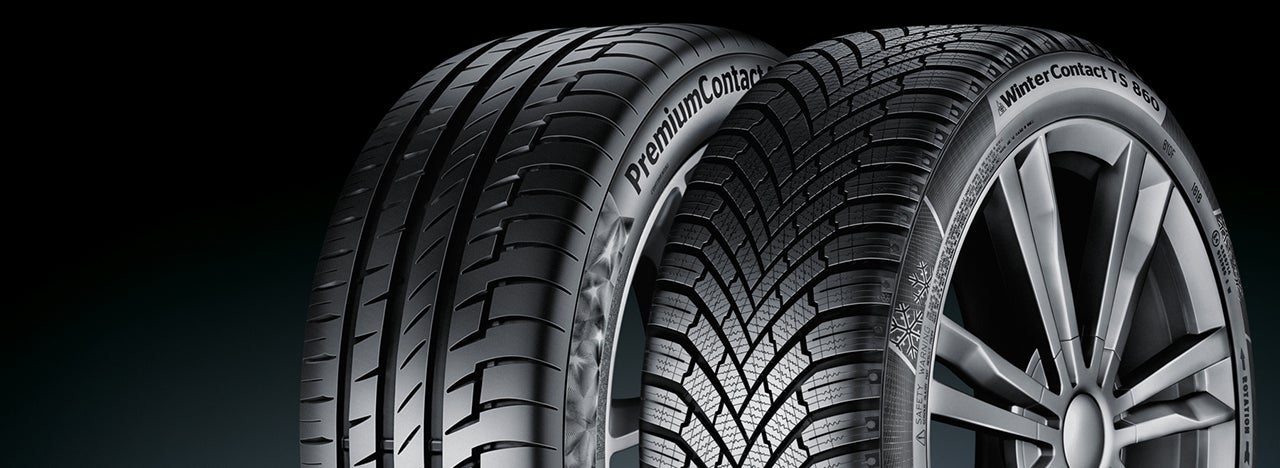
# Tire Change and Fitting
Changing tires
What to do when it's time for a tire change
With seasonal changes throughout the year, there's also a case for changing the tires on the wheels of your car. In this section, we will discuss how and when a driver should switch to summer tires, winter tires, or all-season tires. There are fundamental differences between the three, and it's helpful to know what they are.
When, for example, is the best time of year for summer tires? Ha, yes, that sounds like a ridiculous question. The name of the tires is self-explanatory, isn’t it? But in reality, summer tires are recommended for use from Easter to October, which spans seasonal conditions of spring, summer, and autumn as well.
Summer tires provide superb grip and handling when driving on wet and dry roads. But when the temperature falls below 7 °C (46 °F) it's time to change over to winter tires for better grip and traction on snowy, icy roads.

In another section, we will address a common problem regarding the use of winter tires in summer, and summer tires in winter. It's incredibly important for drivers to know why it's counterproductive to drive on winter tires in warm weather and vice versa. It's not a lecture, folks, just a simple primer on how dedicated rubber compounds work in different temperatures. Using winter tires year-round is not a good idea.
How long does it take to have a tire changed? That's a good question; the process can be made quicker or longer depending on a couple of factors. You could try doing it yourself, but to loosen the lugs on the wheel might take up a fair chunk of your time. If you were to schedule a visit to your friendly neighborhood tire dealer, however, they might require as little as 20 minutes of your time to do the job. The key approach is preparedness, and we have some excellent tips on how to rotate from summer to winter tires without any fuss.
Finally, we will talk about things to consider when braking with new car tires. Whether they're winter tires, summer tires, or all-season tires, fitting a brand-new set to your wheels is like trying on a new pair of hiking boots. Both require a little bit of time and patience to break them in. We'll explain how and why.
Related content
-
 2024/10/17Summer tires vs. winter tiresThe weather changes throughout the year, which affects driving conditions on the road; fit your car with tires that will provide you with the most confidence.Read more
2024/10/17Summer tires vs. winter tiresThe weather changes throughout the year, which affects driving conditions on the road; fit your car with tires that will provide you with the most confidence.Read more -
 2024/10/17Winter tires in summerWinter tires are the undisputed champion when it comes to colder climates, but their unique features are a disadvantage if used in warmer temperatures.Read more
2024/10/17Winter tires in summerWinter tires are the undisputed champion when it comes to colder climates, but their unique features are a disadvantage if used in warmer temperatures.Read more -
 2024/10/17Summer tires in winterWinter is a time to put winter tires on your car. We recommend against using summer tires if there's any snow, ice, or the temperature is freezing.Read more
2024/10/17Summer tires in winterWinter is a time to put winter tires on your car. We recommend against using summer tires if there's any snow, ice, or the temperature is freezing.Read more
